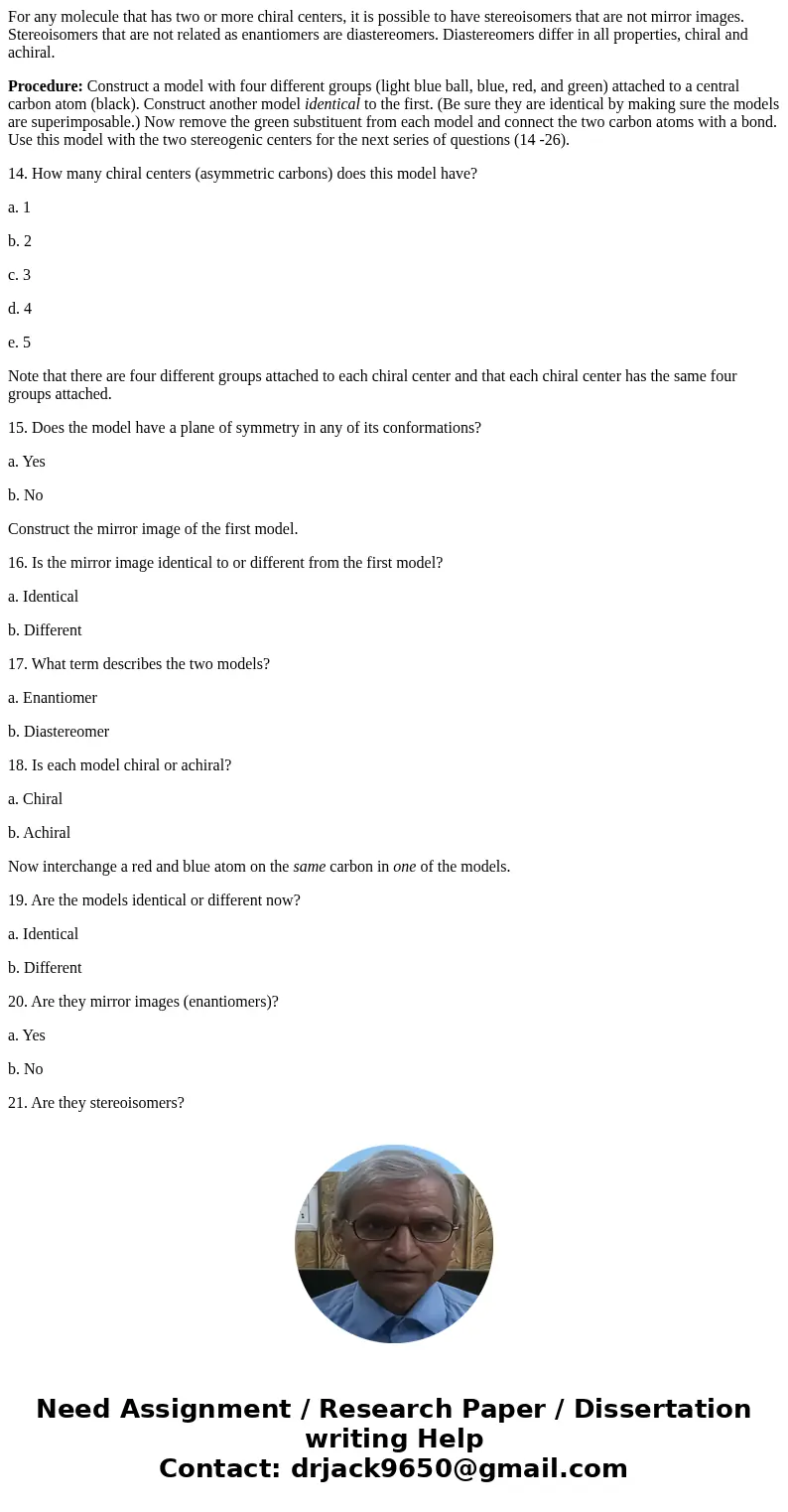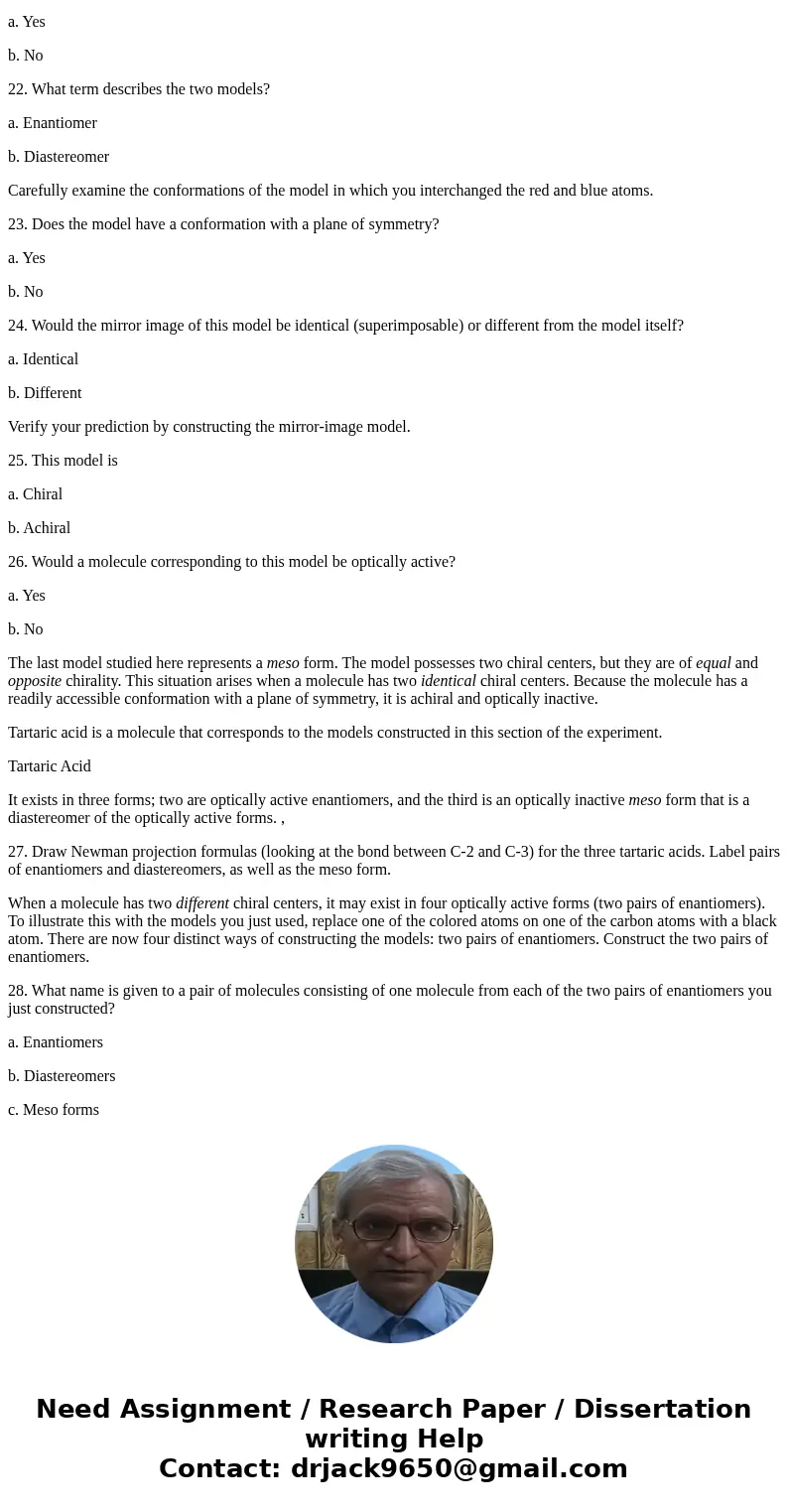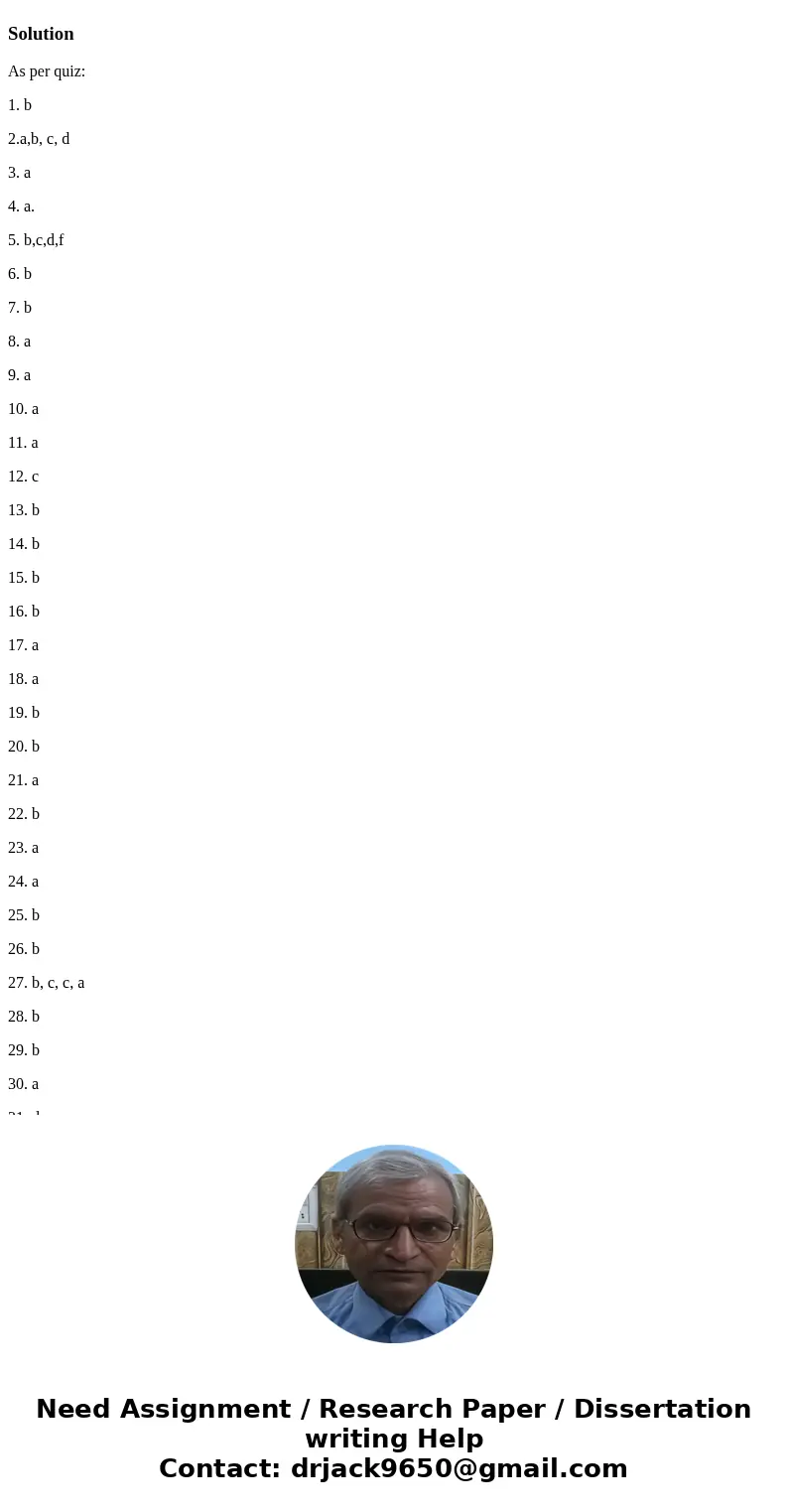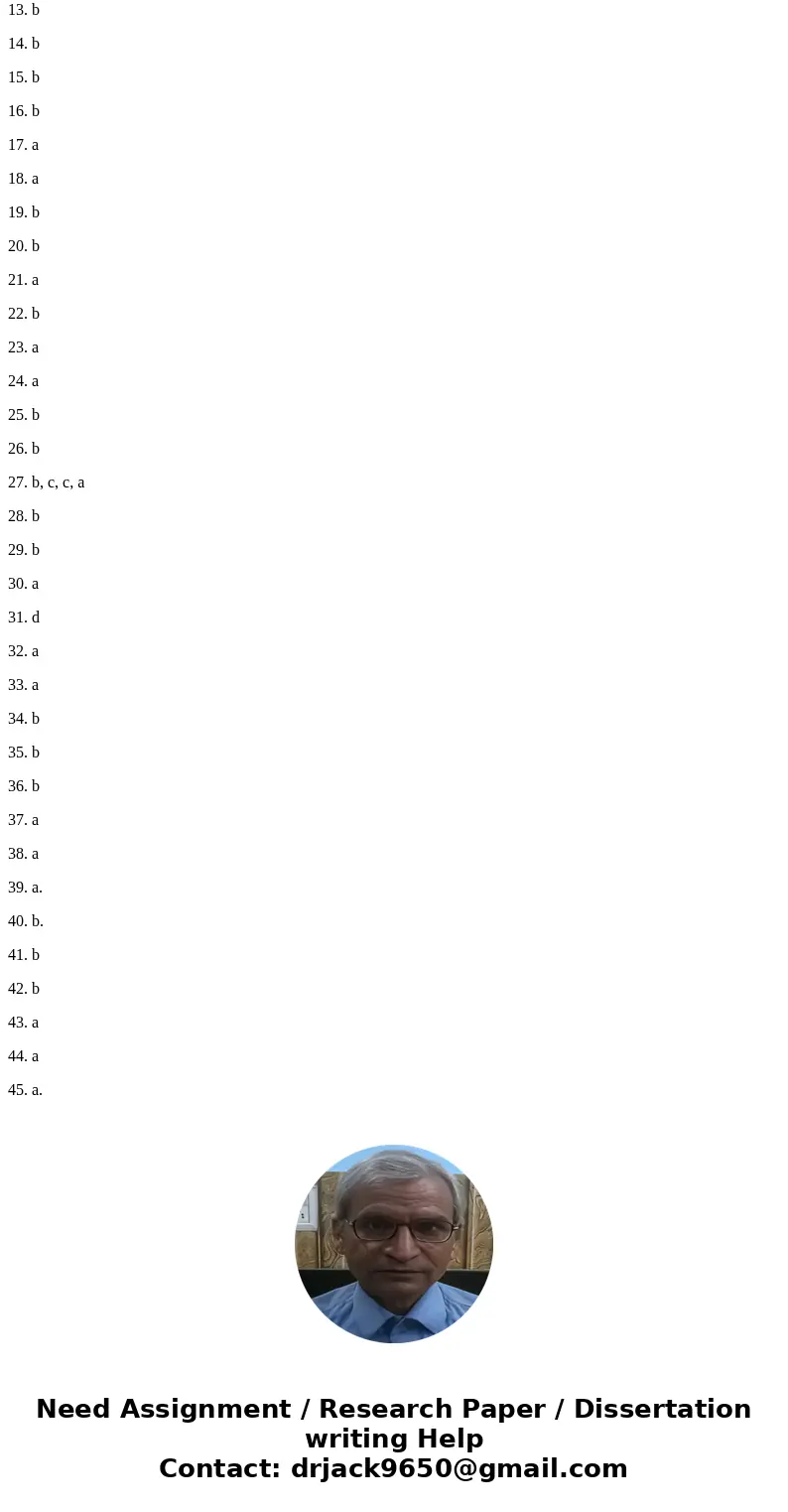For any molecule that has two or more chiral centers it is p
For any molecule that has two or more chiral centers, it is possible to have stereoisomers that are not mirror images. Stereoisomers that are not related as enantiomers are diastereomers. Diastereomers differ in all properties, chiral and achiral.
Procedure: Construct a model with four different groups (light blue ball, blue, red, and green) attached to a central carbon atom (black). Construct another model identical to the first. (Be sure they are identical by making sure the models are superimposable.) Now remove the green substituent from each model and connect the two carbon atoms with a bond. Use this model with the two stereogenic centers for the next series of questions (14 -26).
14. How many chiral centers (asymmetric carbons) does this model have?
a. 1
b. 2
c. 3
d. 4
e. 5
Note that there are four different groups attached to each chiral center and that each chiral center has the same four groups attached.
15. Does the model have a plane of symmetry in any of its conformations?
a. Yes
b. No
Construct the mirror image of the first model.
16. Is the mirror image identical to or different from the first model?
a. Identical
b. Different
17. What term describes the two models?
a. Enantiomer
b. Diastereomer
18. Is each model chiral or achiral?
a. Chiral
b. Achiral
Now interchange a red and blue atom on the same carbon in one of the models.
19. Are the models identical or different now?
a. Identical
b. Different
20. Are they mirror images (enantiomers)?
a. Yes
b. No
21. Are they stereoisomers?
a. Yes
b. No
22. What term describes the two models?
a. Enantiomer
b. Diastereomer
Carefully examine the conformations of the model in which you interchanged the red and blue atoms.
23. Does the model have a conformation with a plane of symmetry?
a. Yes
b. No
24. Would the mirror image of this model be identical (superimposable) or different from the model itself?
a. Identical
b. Different
Verify your prediction by constructing the mirror-image model.
25. This model is
a. Chiral
b. Achiral
26. Would a molecule corresponding to this model be optically active?
a. Yes
b. No
The last model studied here represents a meso form. The model possesses two chiral centers, but they are of equal and opposite chirality. This situation arises when a molecule has two identical chiral centers. Because the molecule has a readily accessible conformation with a plane of symmetry, it is achiral and optically inactive.
Tartaric acid is a molecule that corresponds to the models constructed in this section of the experiment.
Tartaric Acid
It exists in three forms; two are optically active enantiomers, and the third is an optically inactive meso form that is a diastereomer of the optically active forms. ,
27. Draw Newman projection formulas (looking at the bond between C-2 and C-3) for the three tartaric acids. Label pairs of enantiomers and diastereomers, as well as the meso form.
When a molecule has two different chiral centers, it may exist in four optically active forms (two pairs of enantiomers). To illustrate this with the models you just used, replace one of the colored atoms on one of the carbon atoms with a black atom. There are now four distinct ways of constructing the models: two pairs of enantiomers. Construct the two pairs of enantiomers.
28. What name is given to a pair of molecules consisting of one molecule from each of the two pairs of enantiomers you just constructed?
a. Enantiomers
b. Diastereomers
c. Meso forms
Solution
As per quiz:
1. b
2.a,b, c, d
3. a
4. a.
5. b,c,d,f
6. b
7. b
8. a
9. a
10. a
11. a
12. c
13. b
14. b
15. b
16. b
17. a
18. a
19. b
20. b
21. a
22. b
23. a
24. a
25. b
26. b
27. b, c, c, a
28. b
29. b
30. a
31. d
32. a
33. a
34. b
35. b
36. b
37. a
38. a
39. a.
40. b.
41. b
42. b
43. a
44. a
45. a.




 Homework Sourse
Homework Sourse